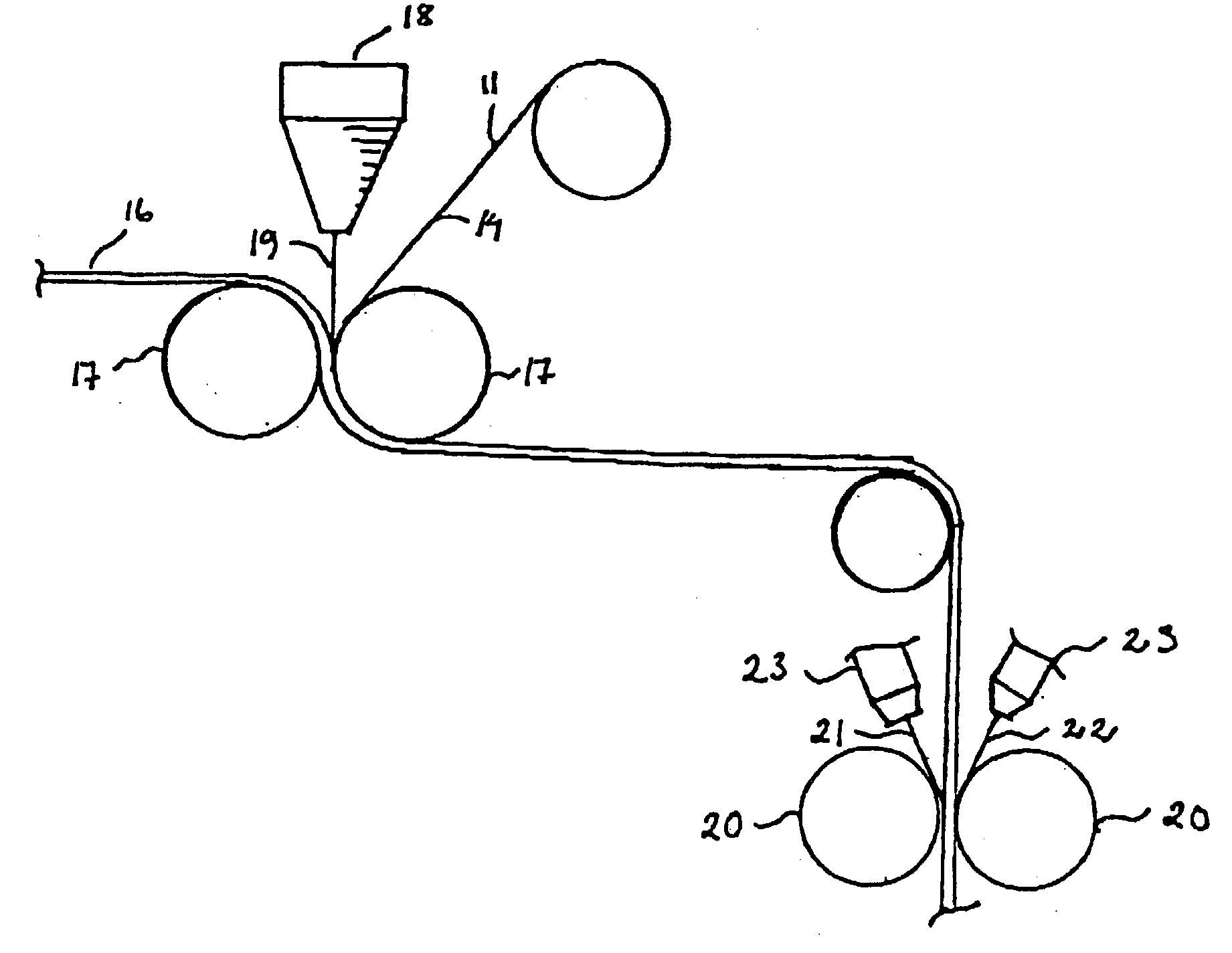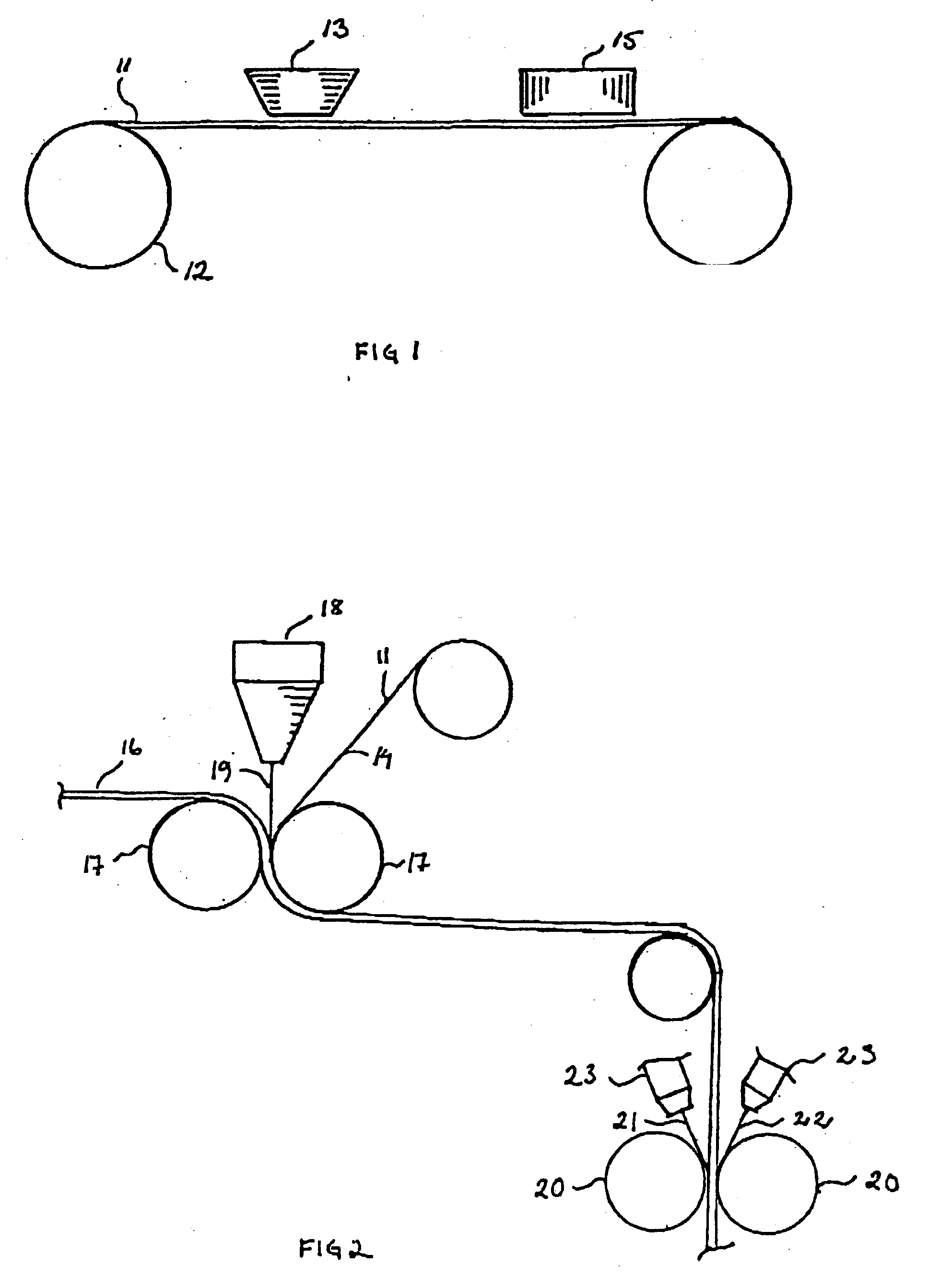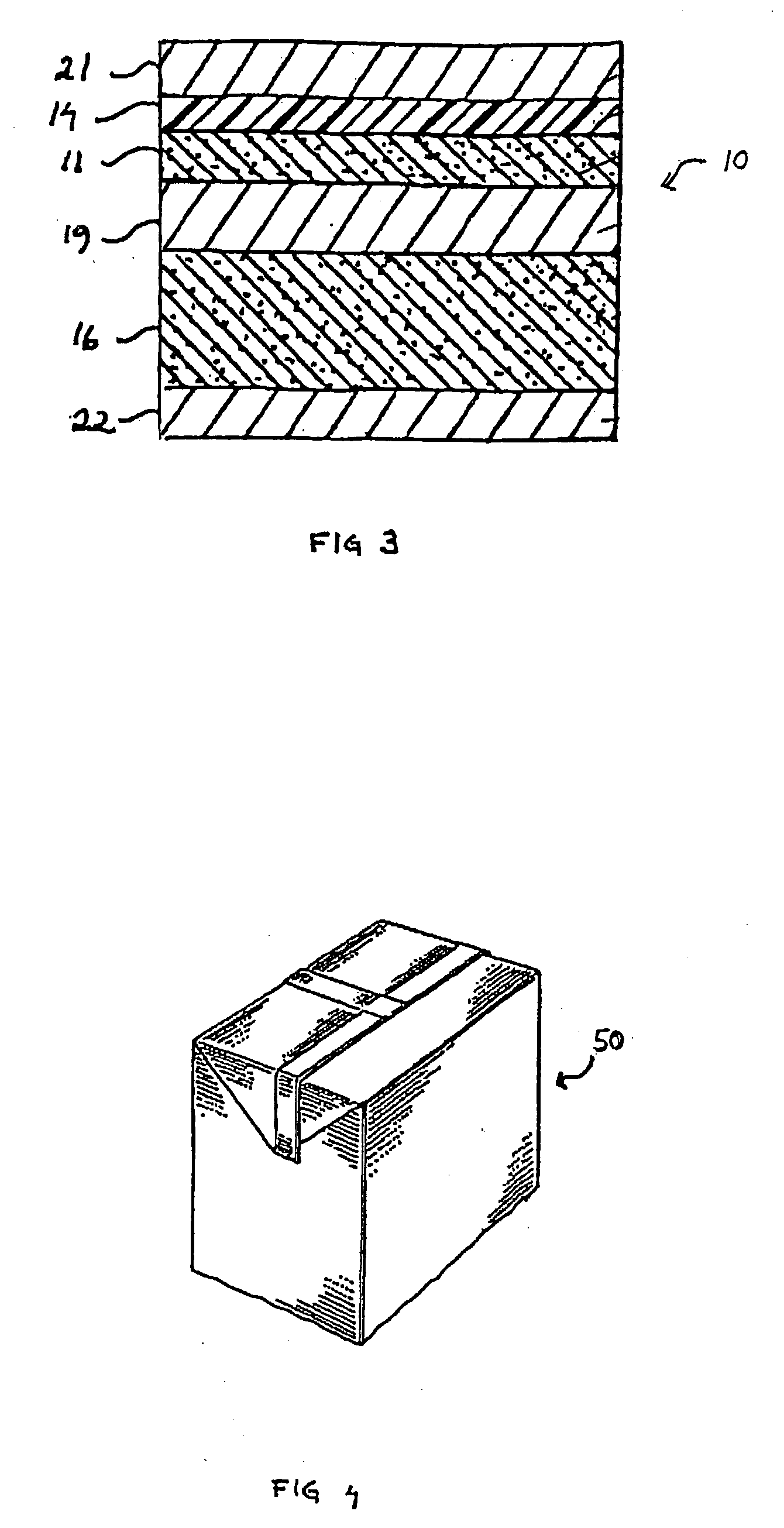Laminated packaging materials and packaging containers produced therefrom
a technology of laminated packaging materials and packaging containers, which is applied in the direction of flexible covers, lamination, packaging, etc., can solve the problems of deteriorating affecting the shelf life of many foods, and unable to meet the requirements of food safety, so as to achieve the effect of increasing the thickness and improving the gas barrier property of the starch layer
- Summary
- Abstract
- Description
- Claims
- Application Information
AI Technical Summary
Benefits of technology
Problems solved by technology
Method used
Image
Examples
example 2
[0129] PVOH with EAA was coated in a pilot plant onto LDPE-coated thin carrier layer paper of surface weight 13 g / m.sup.2. The PVOH / EAA was dispersion coated onto the LDPE-coated side of the PE-coated thin carrier layer paper. The PVOH / EAA coating had a layer thickness of 5 microns. The LDPE layer was 10 g / m.sup.2. Oxygen permeability was measured in cm.sup.3 / m.sup.2, 24 h, 1 atm.
2 Web temp. Curing temperature O2 permeability (just after drying) (air temp. in oven) (23.degree. C., 50% RH) (80% RH) When coating PVOH with 20% EAA: 100 225 0.02-0.05 80-100 150 225 0.02-0.05 25-30 When coating PVOH with 5% EAA: 100 225 0.02-0.05 60-80 150 225 0.02-0.05 10-15 When coating PVOH with 0% EAA: 100 225 0.02-0.05 dissolves 150 225 0.02-0.05 dissolves
PUM
| Property | Measurement | Unit |
|---|---|---|
| temperature | aaaaa | aaaaa |
| temperature | aaaaa | aaaaa |
| temperature | aaaaa | aaaaa |
Abstract
Description
Claims
Application Information
 Login to View More
Login to View More - R&D
- Intellectual Property
- Life Sciences
- Materials
- Tech Scout
- Unparalleled Data Quality
- Higher Quality Content
- 60% Fewer Hallucinations
Browse by: Latest US Patents, China's latest patents, Technical Efficacy Thesaurus, Application Domain, Technology Topic, Popular Technical Reports.
© 2025 PatSnap. All rights reserved.Legal|Privacy policy|Modern Slavery Act Transparency Statement|Sitemap|About US| Contact US: help@patsnap.com



